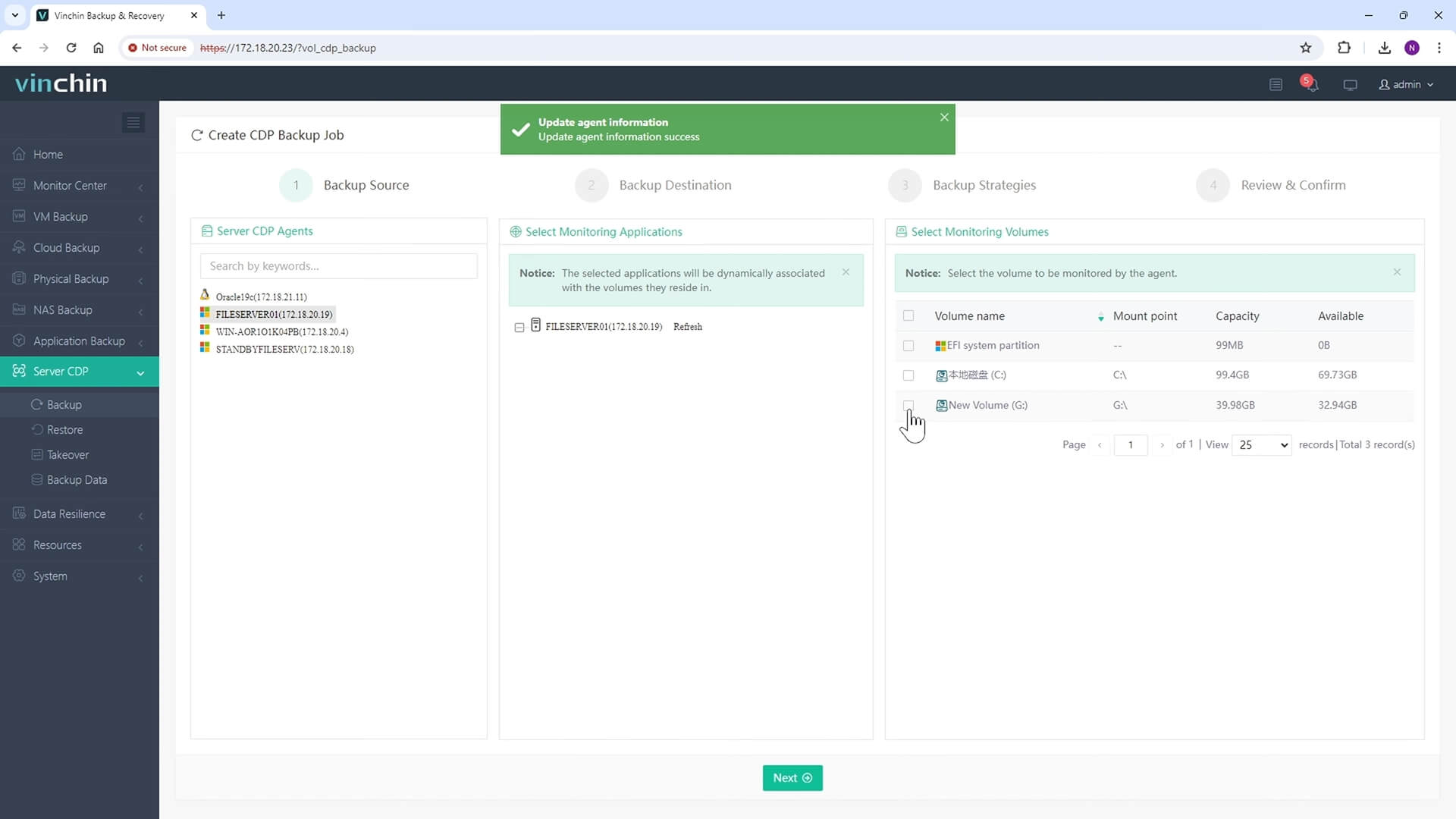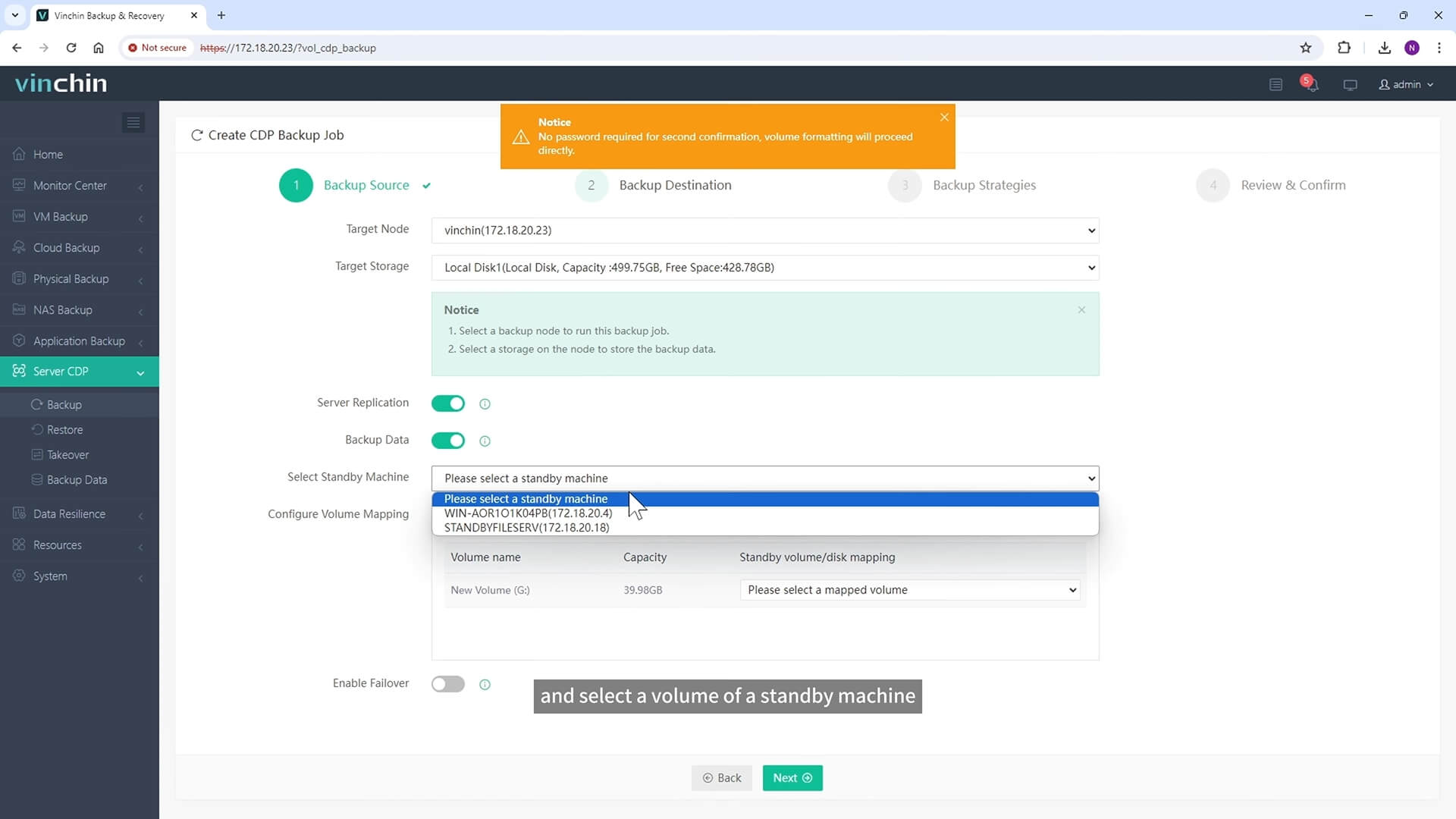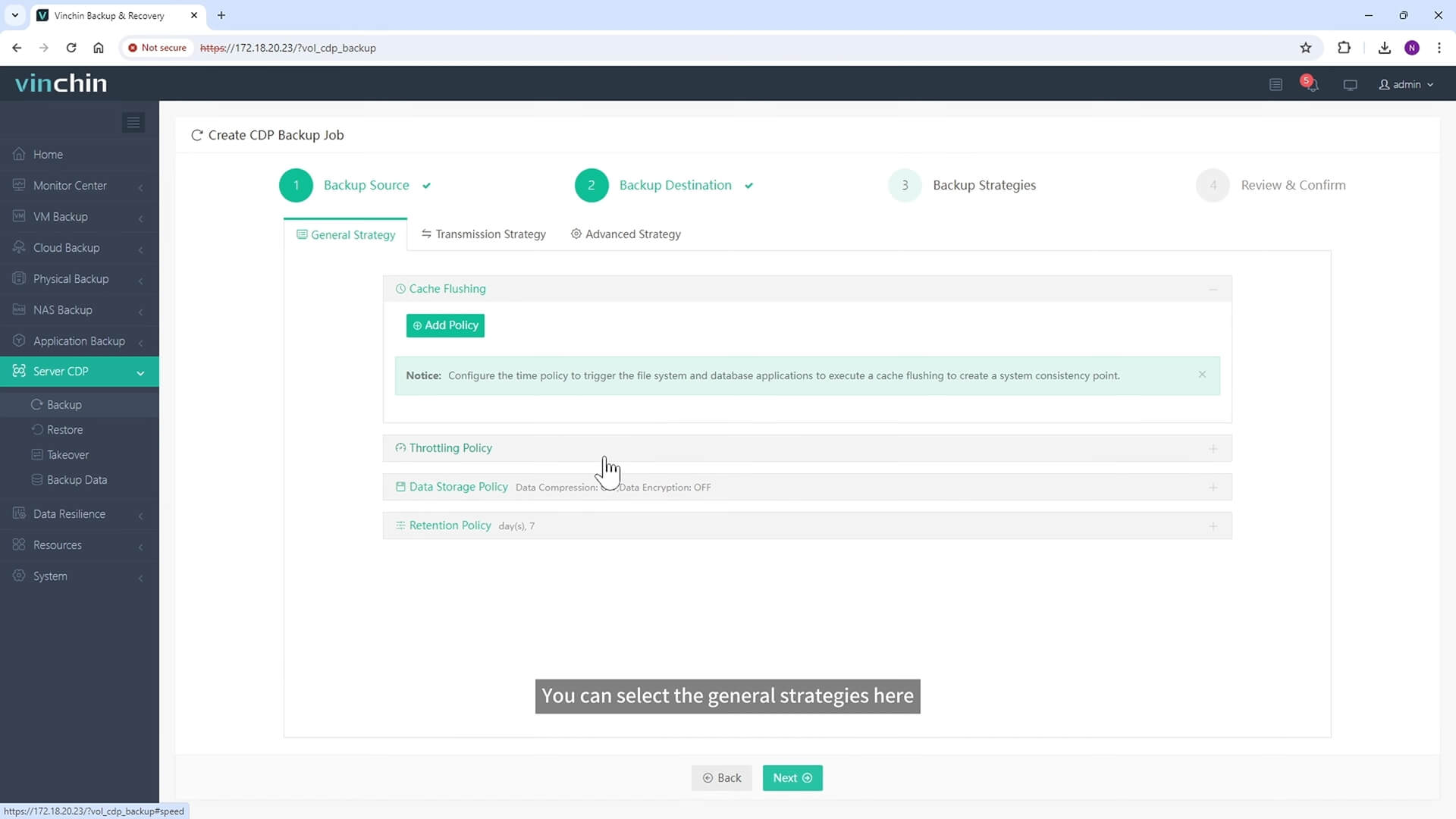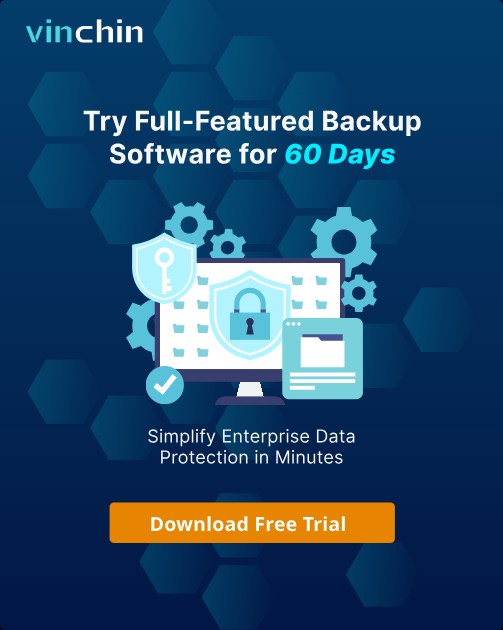-
What is continuous data protection?
-
Advantages of continuous data protection
-
How does continuous data protection work?
-
Comparison Between CDP and Other Backup and Replication Solutions
-
Protect various workloads with Vinchin CDP
-
CDP FAQs
-
Sum Up
In the realm of data protection, IT admins always try to protect data in every way. Traditional backup methods can only provide the primary protection to data, but with the evolution of technology, advanced data protection solutions keep coming.
Continuous data protection (CDP), is invented to meet the the increasing demand for real-time data protection. In this guide, you will learn what is CDP and how it works.
What is continuous data protection?
Continuous data protection is an advanced disaster recovery solution for enterprises to protect critical infrastructure like databases, virtual machines, file servers, etc., by allowing for continuous capture or tracking of any changes to target data without affecting the primary system and restoring data to any previous point in time when needed.
Compared with traditional backup methods which often involve periodic backups at set intervals although some intervals can be as short as minuets, CDP provides more granularity and minimizes RPO, Recovery Point Objective, and RTO, Recovery Time Objective, to near zero because of real-time or near-real-time data copy.
CDP technology represents a revolutionary breakthrough compared to traditional data backup because there are always issues like backup windows, data consistency, and impacts on production systems. Now, CDP offers users a new method of data protection. System administrators no longer need to worry about the backup process because CDP systems will continuously monitor changes in critical data and automatically ensure data protection. In the event of disaster, critical systems can be easily saved by selecting the desired time point for quick data recovery in the event of a disaster.
Advantages of continuous data protection
As an advanced disaster recovery solution, it can bring many benefits.
Real-time protection: Because CDP ensures continuous data backup, the data on the machine is protected in real time.
Granular recovery: CDP does not only provide real-time backup, but also lets you perform point-in-time recovery when needed, giving you more options for data recovery.
Minimal RPO/RTO: CDP can capture the changes of data in real time so you hardly lose data because you can revert the machine nearly to the state when the disaster just happens, minimizing the RPO to near zero. CDP often provides fast recovery technology so the RTO will also be minimized to near zero.
Simple management: CDP can simplify data protection management by automating backup process and eliminating the need for manual intervention. Administrators can easily monitor and manage tasks via an intuitive interface or emails.
Enhanced high availability: By continuously capturing and replicating data, CDP enhances high availability by ensuring fast data recovery after disaster happens. With heartbeat monitoring, the protected machine can be automatically restarted when it fails.
How does continuous data protection work?
Continuous data protection can record every data change automatically for subsequent retrieval at any point in time when needed. Unlike traditional backup techniques, CDP backs up data in real-time, safeguarding all data, including files, databases, applications, and operating systems.
CDP achieves this by inserting an intermediate layer, known as the CDP agent, between the data source and the storage device to record data changes in real-time. CDP will save data encompassing all data change information such as creations, modifications, deletions, etc., and then store the data on a CDP server for data recovery later.
When data needs to be restored, CDP server will retrieve the data based on the specified recovery point and restore the data accordingly. Unlike traditional backup techniques, CDP does not require restoring the entire dataset but only needs to restore the machine to the desired time point. This means that CDP can achieve recovery at the granularity of seconds, avoiding the lengthy recovery time of hours or days associated with traditional backup techniques.
Comparison Between CDP and Other Backup and Replication Solutions
Compared with traditional backup and replication solutions, what makes CDP stand out?
CDP vs. Traditional Backup
CDP is actually a backup solution. When you restore a machine protected by CDP, it still requires selecting the recovery point and read the data from backup repository but compared with the traditional backup solutions, it has a shorter backup window, near zero, and it provides more granularity for data restore.
In addition, CDP is not a simple backup solution because it often works with quickly full machine recovery solution. Therefore, combined with these advantages, it provides real-time protection to the machine and minimize the RTO and RPO to near zero. That’s what the traditional backup solution can’t do.
CDP vs. Replication
Both CDP and replication can provide real-time protection to the critical infrastructures but because CDP is backup solution so the differences between CDP and replication is those between backup and replication.
CDP can provide more granular options when restore data but replication can only restore the machine to the last state.
Protect various workloads with Vinchin CDP
Vinchin’s CDP can protect your critical infrastructures like Windows/Linux server, virtual machines like VMware, Hyper-V, Proxmox, oVirt, OLVM, etc. with volume-level CDP which means you can select the volumes of the machine to protect.
Except for CDP, Vinchin also lets you replicate the volume to a standby machine so you can directly restart the business systems on that machine in the event of disaster. Further more, it’s heartbeat monitoring makes the backup system identify whether the primary server is down so it will automatically restart the business systems on the standby machine if you have enabled Automatic Failover when configuring the CDP task.
It provides a user-friendly web console to let you easily create the CDP job.
1. Select the volumes you want to protect
2. Select backup storage. You can also enable Server Replication and Failover here.
3. Select backup strategies
4. Submit the job
Vinchin has helped thousands of companies protect workloads and you can also start a 60-day full-featured free trial to see how powerful it is. For any questions, you can contact our sales and support team for help.
CDP FAQs
1. Is CDP suitable for all types of data?
CDP is powerful but it is not suitable for all types of data. As is mentioned before, CDP is used to protect the critical data because it is usually pricy and needs to take a lot of resources. Therefore, using just common data protection solution for non-critical systems is fine.
2. Will CDP influence network bandwidth?
Because it needs to protect the machines in real time so it has high requirements for the network conditions and will increase network bandwidth utilization
3. Can CDP be used for disaster recovery?
Yes. CDP is an advanced solution for disaster recovery because it minimizes RTO and RPO to near zero but you still need other solutions like offsite backup and ransomware protection to ensure data security and business continuity.
Sum Up
Continue data protection can provide real time data protection and recover data very quickly so enterprises often use it to protect critical facilities. Compared with traditional backup and replication solutions, it has more advantages especially in restoration granularity.
Vinchin Backup & Recovery provides powerful CDP and automatic failover solutions so don't miss the free trial.
Share on:








